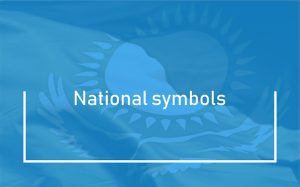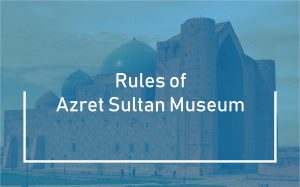There is no exact date of Kayip khan’s birth. Date of his death accounts for the end of 1718. Based on historical facts, academic historian I.V. Erofeeva, was of the opinion that he was the son of Kosrau sultan, grandson of Syrdak sultan and ancestor of famous Esim khan (Erofeeva, 1997: 74). Kayip khan comes from Djadikov dynasty of Kazakh khans. His sons were Batyr sultan and Kudaymende. During the period of Tauke khan ruling, Kayip was khan of one of ulus in around of 1703– 1710. After Tauke khan’s death in 1715, he became the greatest Kazakh khan. According to historical data, in early XVIII century Kayip khan ruled some tribes of Junior and Middle Zhuzes. Since 1715, his authority extended to Turkestan and its outskirts, including small cities. Kayip khan made a contribution to development of Kazakh-Russian relations. Documents related to Kazakh-Russian relationships in XVI–XVIII centuries reveal nature and objective of Kayip Kospa Uly policy, who became khan of Kazakh khanate. This materials were collected and published in 8 documents, confirming Kayip khan’s external policy. The letter on behalf of all Kazakhs addressed to Siberian governor M. Gagarin, Kayip and Abulkhair khans asked to return 1500 horses, stolen by Bashkirs. And the letter dated December 10, 1718 addressed to Petr I, he called upon to unite against battle with Dzungarians (KazakhRussian relations in XVI–XVIII centuries, 1961: 247). Situation of foreign policy in Kazakh khanate under Kayip was very intense. He kept getting threatened by Dzungarians from east, Bashkir’s and Kalmyk’s rulers from west. Kayip’s main and final political goal was to develop aids which would significantly assist in fighting against Dzungarians. He expected to have significant help from western neighbor, Russia. In 1716, Kazakh ambassadors Bekbolat Ekeshev and Baidaulet Boriyev were sent to Tobol and took part in resolving issues related with close cooperation of Kayip with Russian government, “forging long-term truce”, Kazakh-Russian military union against Dzungarian khanate and “allowing Kazakh herders to freely access closest Russian markets”. Siberian governor told M.P. Gagarin about it (History of Kazakhstan, 2002: 111). In turn, Siberian administration expressed its agreement to fulfill Kayips wishes. Due to the urgency regarding the need to fight with Dzungarians, Kayip had to contact with P.S. Saltykov, Kazan’s governor. The main goal of enhancing political relations between Kazakh khanate was to join bilateral efforts in battle with Dzungarians (History of Kazakhstan, 2002: 112). Receiving the power from Uly Khan and being successor of Tauke khan, Kayip khan died in a battle for throne with Middle zhuz sultans in 1718. There is no true information on his burial. It’s speculated in historical sources that his burial locates in Turkestan.
KAYIP KHAN KOSRA ULY










